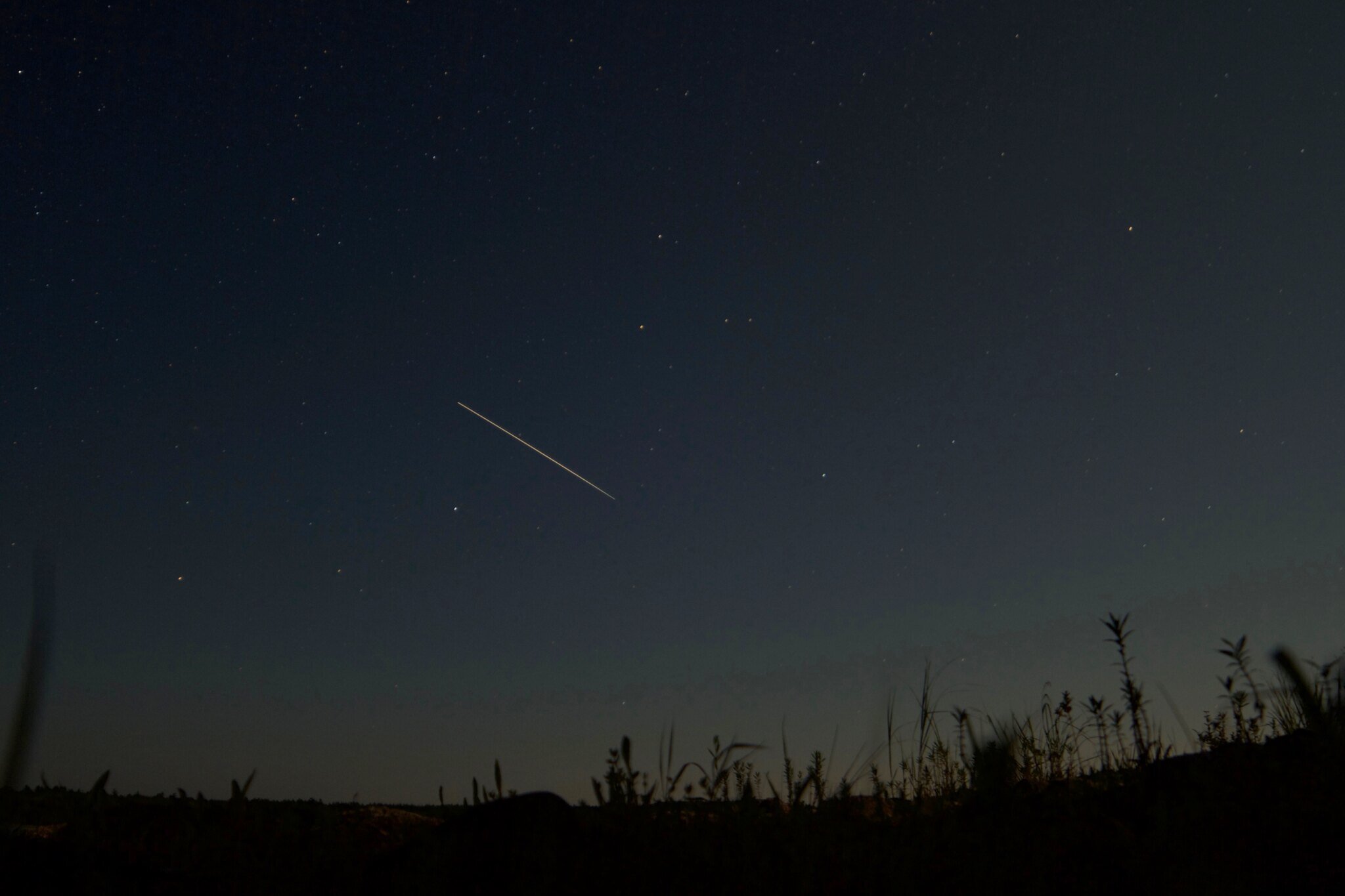Season of mists and mellow fruitfulness; close bosom–friend of the maturing sun. – John Keats, Ode to Autumn
HERE IN THIS season of changes, the night sky comes upon us ever more quickly and the days of bare–headed stargazing are fading fast.
The transitory nature of things has come close to home this autumn.
An old friend – a burly, blue– and yellow–eyed guy named Phoenix – has departed for the great catnip patch in the sky. Whenever my heart needs some warming up, I'll think of him dozing in a comfy patch of light from his favourite star, head nestled between his big white paws.
And a recent move has changed my astronomical ways. On the bright side (or dark, as it happens), we're temporarily even deeper in the sticks than our previous abode. While our new digs are being built, I'll enjoy probably the least light–polluted skies I've ever had.
The back deck now faces north – not usually a direction coveted by stargazers.
The northern horizon is on the opposite side of the sky from the richer parts of the Milky Way. Besides that, not much changes in this region. Many of the constellations are circumpolar, a fancy way of saying they never completely set.
The six circumpolar constellations slowly wheel around the North Star, Polaris, in a counter–clockwise motion throughout the year.
For example, probably the most famous star group, the Big Dipper, is now very low in the 7 o'clock position, and by next month will be striking about 6 o'clock.
The Big Dipper is part of Ursa Major, the Great Bear. The outside stars of the Big Dipper's bowl point up to Polaris, at the end of the Little Dipper's handle in Ursa Minor.
Keep tracing this imaginary line past Polaris and you'll come to the peak of the house–shaped constellation Cepheus (SEE–fee–us), the King.
If you've found Cepheus, your eye should certainly catch the brighter W–shape of Cassiopeia (kas–ee–oh–PEE–uh), right next door.
Probably the least known member of the circumpolar club is a real mouthful: Camelopardalis (kam–uh–low–PAR–da–lis), the Giraffe.
This is one tough beast to track down.
When I first got into this hobby, I thought I'd found the Giraffe with no problem. I looked up in the northeastern winter sky, saw a curving line of stars that seemed to form a long neck, with two stellar "legs" on either side. Hello, Camelopardalis.
Not so much. I was actually looking at Perseus, the mythological hero equipped with sword and shield.
This glittering constellation is now low in the northeast just after dark.
You can use Perseus to find the real giraffe. Camelopardalis is just to the left of Perseus, a much dimmer version of its wishbone shape.
Another elusive circumpolar beast, the faint and sprawling Draco (DRAY–ko) the Dragon, weaves its tail around the Little Dipper and arches up toward Cepheus. The Dragon's head lies farther west, perilously close to Hercules, the strongman demi–god who killed Draco.
















